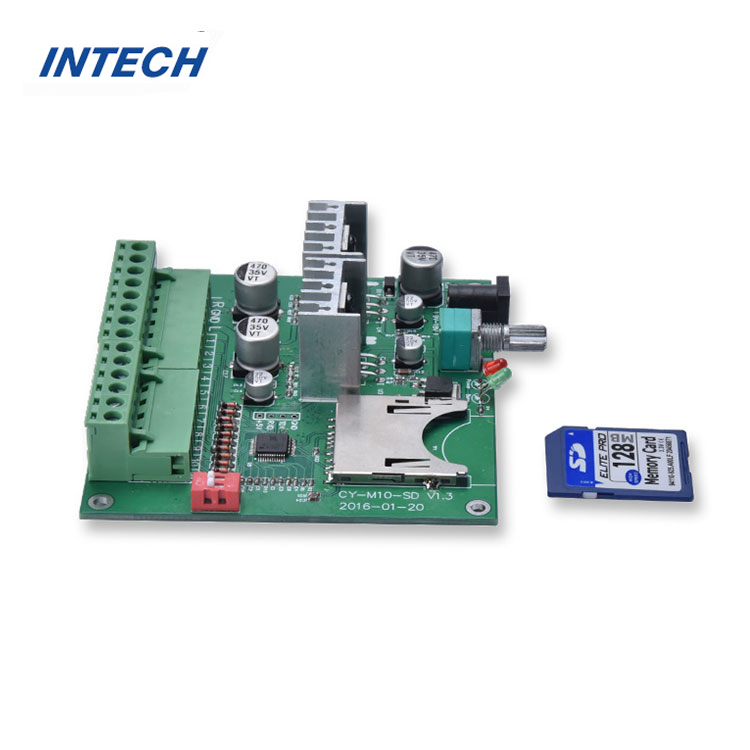What should we pay attention to during the production of ultra-small PCB?
Date:2023-11-17 15:08:42
When it comes to the production of ultra-small printed circuit boards (PCBs), paying attention to every detail becomes crucial. The miniature size and complex design of these PCBs pose unique challenges that require meticulous planning and execution. In this article, we will discuss the key considerations and best practices that manufacturers should keep in mind during the production of ultra-small PCBs.
1. Component Selection and Placement
The miniaturization of PCBs demands careful selection and placement of components. It is essential to choose components that are small enough to fit within the limited space available. Surface Mount Technology (SMT) components are often preferred due to their compact size. Additionally, components with higher integration, such as System-on-Chip (SoC) solutions, are beneficial in reducing overall board size.
During the placement process, ensuring proper alignment and spacing between components is critical to avoid electrical shorts and interference. Advanced automated placement machines and optical inspection systems can assist in achieving precise and accurate component placement.
2. Trace Width and Spacing
Ultra-small PCBs require thinner traces to accommodate the reduced space available for routing. Careful consideration must be given to the trace width and spacing to avoid signal integrity issues, crosstalk, and excessive resistance in high-current areas. Specialized design software and manufacturing techniques, such as microvia technology and laser drilling, can be employed to achieve finer trace widths and tighter spacing.

3. Thermal Management
Effective thermal management is essential for ultra-small PCBs to prevent overheating and ensure reliable performance. The compact size of these boards limits the dissipation of heat. To address this challenge, careful consideration must be given to the placement of heat-generating components, such as microprocessors, and the incorporation of heat sinks or thermal vias to enhance heat dissipation.
Furthermore, simulation tools can be utilized to analyze and optimize the thermal performance of the PCB design before production. This allows for the identification of potential hotspots and the implementation of appropriate thermal relief measures.
4. Testing and Quality Assurance
Due to the inherent complexity of ultra-small PCBs, thorough testing and quality assurance processes are paramount. In-circuit testing (ICT), functional testing, and automated optical inspection (AOI) techniques should be employed to detect any manufacturing defects, short circuits, or faulty components. Additionally, rigorous reliability testing, such as temperature cycling and vibration testing, should be conducted to ensure the long-term performance and durability of the PCBs.
5. Design for Manufacturing (DFM)
Design for Manufacturing (DFM) practices are crucial in the production of ultra-small PCBs. Collaboration between design engineers and manufacturing experts from the initial stages ensures that the design is optimized for efficient production. DFM considerations include component accessibility for assembly, fabrication constraints, and ensuring the manufacturability of the design within the given time and cost constraints.
DFM analysis tools can be utilized to identify potential issues early in the design process, allowing for necessary modifications to be made to enhance manufacturability and yield.
6. Handling and Assembly
Due to their miniature size, the handling and assembly of ultra-small PCBs require extra care. Manufacturing facilities should have appropriate ESD (Electrostatic Discharge) protection measures in place to prevent any damage during handling. Specialized pick-and-place machines and assembly techniques, such as stencil printing and reflow soldering, should be employed to ensure precise component mounting and reliable solder joints.
Conclusion
The production of ultra-small PCBs presents unique challenges that demand attention to detail and careful consideration of various factors. Component selection, trace width and spacing, thermal management, testing and quality assurance, DFM practices, and proper handling and assembly are all crucial aspects that should be given utmost importance. By following these best practices, manufacturers can ensure the successful production of ultra-small PCBs that meet the stringent size, performance, and reliability requirements of modern electronic devices.
